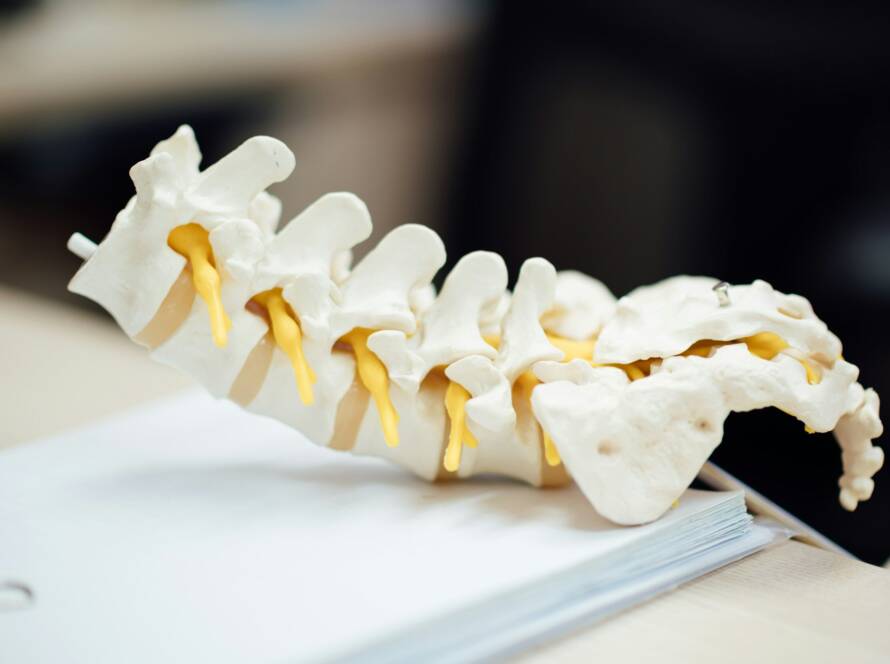Introduction:
Sarcopenia, the age-related loss of muscle mass, strength, and function, is a common but often overlooked condition that affects quality of life as we age. Originally associated with elderly populations, sarcopenia is now recognized as a condition that can begin as early as our 30s, particularly for those who lead sedentary lifestyles. As chiropractor, I frequently encounter athletes and active individuals who want to maintain muscle health and vitality as they age. In this blog, we’ll discuss sarcopenia, its causes, risk factors, and how a comprehensive, holistic approach—including chiropractic care—can play a vital role in prevention and treatment.
What is Sarcopenia?
Sarcopenia is a progressive loss of muscle mass and strength that leads to decreased physical function. Often underdiagnosed, it is considered a key component of frailty and a predictor of functional decline and falls in older adults. Sarcopenia is more than just muscle loss; it is a complex, multifactorial condition that can impact overall health, independence, and even life expectancy.
Etiology and Risk Factors of Sarcopenia
While aging is the primary factor behind sarcopenia, several underlying mechanisms and risk factors contribute to its onset and progression:
-
Hormonal Changes: Aging is often accompanied by decreased levels of hormones like testosterone, estrogen, and growth hormone, which are essential for maintaining muscle mass and repair.
-
Chronic Inflammation: Low-grade inflammation increases with age and can lead to muscle degradation, particularly in individuals with chronic diseases such as diabetes, cardiovascular disease, or rheumatoid arthritis.
-
Sedentary Lifestyle: Physical inactivity is one of the most significant factors in muscle loss. Without regular muscle engagement, sarcopenia accelerates, as the body breaks down muscle tissue faster than it builds it.
-
Nutritional Deficiencies: Insufficient intake of protein, vitamin D, and essential amino acids can impair muscle repair and growth, further contributing to sarcopenia.
-
Neuromuscular Degeneration: Age-related changes in the nervous system reduce the recruitment and activation of muscle fibers, leading to muscle atrophy and strength loss.
-
Comorbidities: Certain medical conditions, such as obesity, diabetes, and arthritis, increase the risk of sarcopenia due to the additional strain on muscles and joints.
Symptoms of Sarcopenia
Early signs of sarcopenia may include:
-
Difficulty with physical tasks, such as lifting or climbing stairs
-
Reduced grip strength
-
Slower walking speed or balance issues
-
Fatigue after simple activities
As sarcopenia progresses, it can lead to an increased risk of falls, decreased mobility, and a significant impact on daily life.
Treatment Options for Sarcopenia
While sarcopenia is a natural part of aging, it can be managed and even reversed with lifestyle changes and specific interventions. Here’s an overview of effective treatment strategies:
-
Resistance Training: Strength training is the cornerstone of sarcopenia treatment, as it stimulates muscle growth and improves strength. Incorporating exercises with weights or resistance bands can enhance muscle protein synthesis, increase bone density, and improve overall mobility.
-
Protein-Rich Diet: Sufficient protein intake is crucial for muscle maintenance and repair. Including lean meats, fish, eggs, legumes, and dairy in daily meals helps provide the amino acids needed for muscle health.
-
Vitamin D and Omega-3 Fatty Acids: Vitamin D supports muscle function and bone health, while omega-3 fatty acids have anti-inflammatory effects that can reduce muscle degradation. Supplements may be beneficial, especially for those with deficiencies.
-
Functional Exercises: Functional movements that mimic daily activities, such as squats, lunges, and step-ups, can improve balance and coordination, reducing the risk of falls and injury.
-
Physical Therapy: Working with a physical therapist can provide a structured program tailored to an individual’s level of sarcopenia and physical ability, promoting safe and progressive improvements in muscle strength.
How Chiropractic Care Can Help
Chiropractic care offers a unique, holistic approach to managing sarcopenia by focusing on musculoskeletal health, joint mobility, and overall neuromuscular function. Here’s how chiropractic care supports sarcopenia management:
-
Spinal and Joint Alignment: As we age, maintaining spinal alignment becomes even more critical to reduce unnecessary stress on muscles and joints. Chiropractic adjustments can help optimize biomechanics, reduce postural strain, and promote efficient movement patterns, which are essential for maintaining muscle function.
-
Improving Neuromuscular Efficiency: Chiropractic adjustments stimulate the nervous system, which can enhance communication between the brain and muscles. By promoting neuromuscular efficiency, chiropractic care can support muscle activation and coordination, both crucial for combating the effects of sarcopenia.
-
Soft Tissue Therapies: Techniques like myofascial release and trigger point therapy can help address muscle stiffness, improve circulation, and reduce any restrictions that may interfere with normal movement. Soft tissue therapy also aids in muscle recovery post-exercise, allowing patients to engage in strength-building activities more effectively.
-
Exercise Prescription: As chiropractors, we can design a personalized exercise plan that incorporates resistance training, balance exercises, and functional movements tailored to the patient’s current muscle strength and mobility level. We can monitor progress and modify exercises to ensure gradual and safe improvement in muscle strength.
-
Nutritional Counseling: Many chiropractors offer guidance on proper nutrition and supplementation to support muscle health. We can advise on dietary adjustments that align with muscle-building goals and recommend supplements like vitamin D, magnesium, and omega-3s if needed.
-
Fall Prevention: Chiropractors focus on balance and stability, which are essential in reducing fall risk, a common concern with sarcopenia. By addressing postural issues, improving joint mobility, and strengthening core stability, chiropractic care can reduce the likelihood of falls and the resulting complications.
Conclusion
Sarcopenia may be an inevitable part of aging, but with proactive strategies and the right support, its effects can be mitigated. A comprehensive approach that includes regular strength training, balanced nutrition, and chiropractic care can help individuals maintain muscle mass, mobility, and quality of life well into their later years. For these reasons, exercise prescription is a key component of our chiropractic treatment approach at our clinic.
At Second Summit, we focus on the unique needs of each patient, supporting their journey to maintain strength, function, and independence. If you or a loved one are experiencing signs of sarcopenia, consider consulting with our chiropractor to learn how a personalized, holistic approach can help you stay strong and active as you age.


